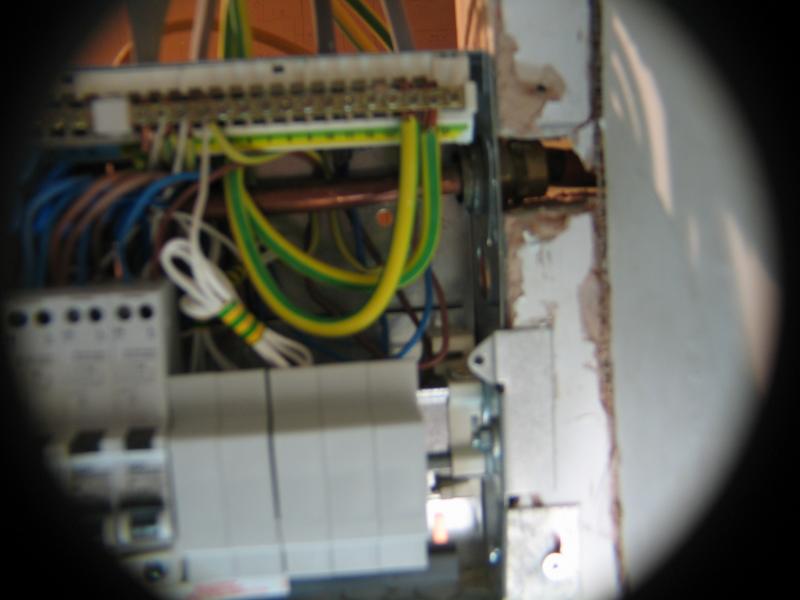- Joined
- 25 May 2007
- Messages
- 10
- Reaction score
- 0
- Country

Hi, I'm not an electrician but I employed a Part P quallfied one to install a consumer service unit and I wonder if the earthing is right.
I have a flat in a house which was first converted in about 1976. There's a Ryedale distribution box close to the entrance. The flat had a metal CSU served by an orange PVC coated copper core mineral insulated core - now understood to be Micc - with line and neutral. There is no earthing in this service cable.
My electrician had kittens when he found this out. "There's no bleedin' earth." He eventually decided to run a 15mm earth direct to a point on the Rydedale where there was also anchored a recent yellow and green cable on the assumption, I think in hindsight, that this would be properly main bonded.
The consumer unit was also 15mm earthed into the gas meter, service side as required. The water supply is in plastic although my central heating and water is in copper.
My question having thought about this for a couple of days and scooted around the site concerns the earthing. Isn't it absolutely near certain that the copper outer sheath is the CPC so that a connection should have been made on the gland asssembly - which is brass - by the attachment of one of those ringy thingys to the earthing rail on the CSU.
Otherwise, it is the case that I have been living in this flat for ten years and I could have been crispy noodle at any point.
A couple of other point. RCBOs have been installed across all the circuits. This means, does it not, that there is no reason to cross-bond the bathroom? This electrician told me this but then I wondered why if that was the case why he thought it necessary to cross-bond and earth the copper pipes below the combi.
cheers
I have a flat in a house which was first converted in about 1976. There's a Ryedale distribution box close to the entrance. The flat had a metal CSU served by an orange PVC coated copper core mineral insulated core - now understood to be Micc - with line and neutral. There is no earthing in this service cable.
My electrician had kittens when he found this out. "There's no bleedin' earth." He eventually decided to run a 15mm earth direct to a point on the Rydedale where there was also anchored a recent yellow and green cable on the assumption, I think in hindsight, that this would be properly main bonded.
The consumer unit was also 15mm earthed into the gas meter, service side as required. The water supply is in plastic although my central heating and water is in copper.
My question having thought about this for a couple of days and scooted around the site concerns the earthing. Isn't it absolutely near certain that the copper outer sheath is the CPC so that a connection should have been made on the gland asssembly - which is brass - by the attachment of one of those ringy thingys to the earthing rail on the CSU.
Otherwise, it is the case that I have been living in this flat for ten years and I could have been crispy noodle at any point.
A couple of other point. RCBOs have been installed across all the circuits. This means, does it not, that there is no reason to cross-bond the bathroom? This electrician told me this but then I wondered why if that was the case why he thought it necessary to cross-bond and earth the copper pipes below the combi.
cheers

